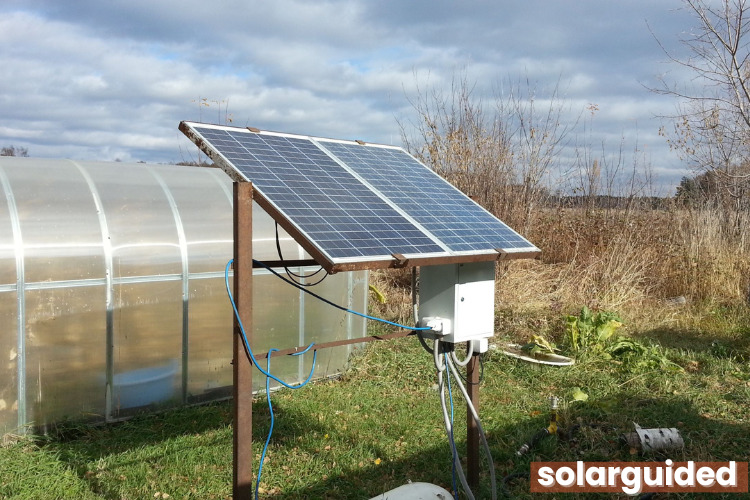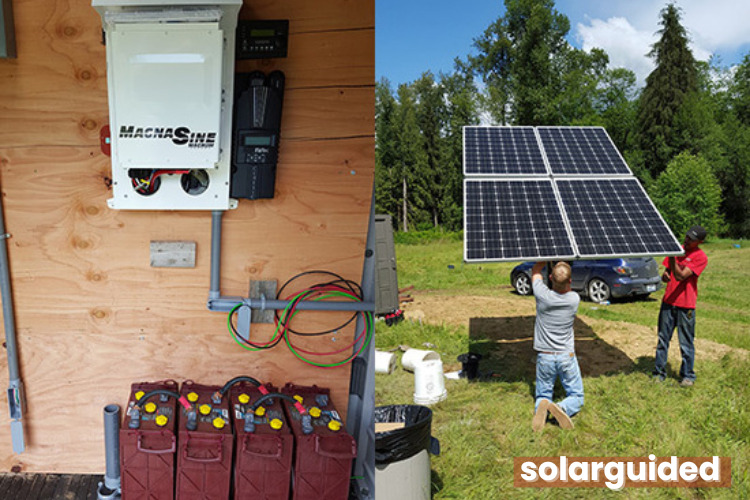Introduction:
The sun, a boundless source of clean energy, fuels life on Earth and holds immense potential to power our future. However, its intermittent nature presents a challenge: sunshine isn’t available 24/7. To truly unlock the potential of solar power, we need effective ways to store this clean energy and use it when needed.
This article delves into the fascinating world of solar energy storage, exploring different methods, their advantages and disadvantages, and their potential impact on our energy landscape.
Types of Energy Storage
Sure, here is a table of different energy storage technologies, along with their descriptions, advantages, disadvantages, and applications.
| Technology | Description | Advantages | Disadvantages | Applications |
| Lithium-ion batteries | Most popular choice, high efficiency, long lifespan, compact size | High energy density, fast charging/discharging | High cost, limited lifespan | Residential, grid-scale, industrial |
| Lead-acid batteries | More affordable, established technology | Lower cost, readily available | Lower capacity, shorter lifespan, require more maintenance | Residential, off-grid systems |
| Saltwater batteries | Less common, gaining traction | Longer lifespan, potential for recycling | Higher upfront cost than lead-acid | Residential, off-grid systems |
| Flow batteries | Ideal for large-scale storage | Long-duration storage, scalable capacity | Higher cost, complex technology | Grid-scale, industrial |
| Pumped hydroelectric storage (PHS) | Established large-scale method | Efficient, large capacity | Requires specific geography, high upfront cost | Grid-scale |
| Compressed air energy storage (CAES) | Large-scale storage, flexible | Cost-effective, long-duration storage | Requires suitable geological formations, significant infrastructure | Grid-scale |
| Hydrogen storage | Versatile storage option | Can be used for electricity generation or transportation | Challenges in production, transportation, infrastructure | Grid-scale, industrial, transportation |
| Redox flow batteries | Emerging technology, promising for scalability | Lower environmental impact, scalable capacity | Still under development, higher cost than some established options | Grid-scale, industrial |

The best way to store solar energy:
Determining the “best” way to store solar energy depends on several factors, making it more nuanced than a singular answer. However, I can provide a comprehensive overview of various storage methods and guide you towards finding the optimal solution for your specific needs.
Understanding the Landscape:
Firstly, it’s crucial to recognize that different applications demand different storage approaches. We can broadly categorize these applications into three main sectors:
1. Residential: Individual homeowners aiming for self-sufficiency and peak demand shaving primarily focus on lithium-ion batteries. These offer high efficiency, long lifespan, and compact size, but come at a premium cost. Lead-acid and saltwater batteries present more affordable alternatives, though with trade-offs in capacity and lifespan. Emerging technologies like flow batteries hold promise for longer-duration storage but are still under development for widespread residential use.
2. Grid-scale: Here, the focus shifts towards larger capacity and cost-effectiveness. Pumped hydroelectric storage (PHS) remains a dominant player, leveraging existing infrastructure for efficient large-scale storage. However, geographical feasibility and high upfront costs pose limitations. Compressed air energy storage (CAES) offers another large-scale option, but requires suitable geological formations and significant infrastructure.
3. Industrial: Industrial applications often demand flexibility and diverse storage needs. Hydrogen storage is gaining traction, allowing excess solar energy to be converted into fuel for later use in electricity generation or transportation. However, challenges remain in production, transportation, and infrastructure. Redox flow batteries, utilizing organic molecules in solution, present potential for scalability and lower environmental impact compared to some traditional battery materials.
Beyond Technology:
While technology plays a pivotal role, remember that effective solar storage necessitates a holistic approach:
- Policy and incentives: Supportive policies and incentives are crucial to encourage research, development, and deployment of storage technologies.
- Cost reduction: Continued advancements and economies of scale will make all storage solutions more affordable and accessible.
- Grid integration: Seamless integration of various storage solutions with existing and smart grids is key for optimal utilization and efficiency.
Guiding Your Choice:
When considering the “best” option for you, ask yourself these questions:
- What is your application (residential, grid-scale, industrial)?
- What are your storage needs (capacity, duration, flexibility)?
- What is your budget?
- What are your local regulations and incentives?
By carefully considering these factors and exploring available options, you can make an informed decision. This might involve consulting with experts like solar installers or energy consultants who can evaluate your specific needs and recommend the most suitable solution.
Technology to help design solar battery storage:
Several exciting technologies are helping design and optimize solar battery storage systems, making them more efficient, cost-effective, and user-friendly. Here are some key examples:
1. Optimization Software:
- Predictive algorithms: These utilize historical data and weather forecasts to predict energy demand and optimize battery usage, reducing wasted energy and extending battery lifespan.
- Financial modeling tools: These help assess the economic viability of different storage options, considering energy costs, potential savings, and return on investment.
- Energy management systems (EMS): These integrate with solar panels, batteries, and smart appliances to automatically manage energy flow, ensuring optimal system performance and maximizing self-consumption.
2. Simulation Tools:
- 3D modeling software: This allows visualization and virtual testing of different battery placements and configurations within a specific layout, optimizing space utilization and thermal management.
- Battery degradation modeling: These tools assess the impact of various factors like temperature, depth of discharge, and charging cycles on battery lifespan, helping predict performance and potential maintenance needs.
- Power flow modeling: This simulates the interaction between solar panels, batteries, and the grid, ensuring compatibility and identifying potential stability issues before actual installation.
3. Artificial Intelligence (AI):
- Machine learning algorithms: These can analyze vast datasets of operational data to identify patterns, optimize charging/discharging cycles, and improve overall system efficiency.
- Fault detection and diagnostics: AI can analyze system data to predict potential failures and recommend preventive maintenance, reducing downtime and improving system reliability.
- Automated optimization: AI-powered systems can learn and adapt to changing energy needs and environmental conditions, automatically adjusting settings for optimal performance.
4. Blockchain Technology:
- Peer-to-peer energy trading: Blockchain can facilitate secure and transparent energy trading between individuals and communities with solar battery systems, fostering energy sharing and grid resiliency.
- Virtual power plants (VPPs): Blockchain can connect multiple distributed solar and battery systems, creating a virtual power plant with increased bargaining power and grid support potential.
- Data security and traceability: Blockchain ensures secure data storage and tracking of energy generation, storage, and consumption, building trust and transparency in distributed energy systems.
Beyond these specific technologies, collaboration and knowledge sharing play a crucial role. Open-source platforms and online communities enable researchers, developers, and users to share data, code, and best practices, accelerating innovation and driving down costs.
Benefits of Solar Energy Storage
The sun, a seemingly endless reservoir of clean energy, offers immense potential to power our future. However, its intermittent nature poses a challenge: sunshine isn’t available 24/7. To truly unlock the potential of solar power, we need effective ways to store this clean energy and access it whenever needed.
Storing solar energy offers a multitude of benefits, not just for individuals and businesses, but for the entire energy ecosystem. Here’s a closer look at the multifaceted rewards of embracing solar storage:
Individual and Business Empowerment:
- Greater Energy Independence: Break free from dependence on traditional electricity grids, particularly in areas prone to outages. Build resilience and enjoy peace of mind with access to stored solar energy during power cuts.
- Maximize Self-Consumption: Utilize more of the solar energy you generate, minimizing reliance on external sources and significantly lowering electricity bills.
- Peak Demand Shaving: Contribute to grid stability by using stored solar energy during high-demand periods, reducing reliance on fossil fuel-based power plants.
Grid Optimization and Sustainability:
- Enhanced Grid Flexibility: Integrate renewable energy sources more seamlessly into the grid, allowing for better management of fluctuating supply and demand.
- Reduced Greenhouse Gas Emissions: By displacing fossil fuel-based electricity generation, solar storage contributes significantly to environmental protection and combating climate change.
- Improved Grid Reliability: Reduce reliance on peak power plants and mitigate the risk of blackouts, leading to a more reliable and stable electricity network.
Economic Advantages:
- Job Creation: The development and deployment of solar storage technologies creates new jobs in research, manufacturing, installation, and maintenance.
- Increased Energy Security: Reduce dependence on volatile fossil fuel prices by utilizing a domestic and clean energy source.
- Enhanced Property Value: Homes with solar energy systems and storage are becoming increasingly attractive to buyers, potentially increasing property value.
Technological Innovation:
- Drives Research and Development: The quest for better storage solutions fuels innovation in materials science, battery technology, and other related fields.
- Creates a More Diverse Energy Landscape: Diversifying the energy mix with various storage options fosters resilience and adaptability to evolving energy needs.
- Prepares for the Future: By developing and implementing efficient storage solutions today, we pave the way for a clean and sustainable energy future.
Beyond these tangible benefits, storing solar energy symbolizes a shift in our relationship with energy:
- Empowering Individuals: We become active participants in the energy chain, taking control of our energy consumption and contributing to a sustainable future.
- Embracing Sustainability: We move towards a future powered by clean and renewable resources, protecting our environment and combating climate change.
- Building a Resilient Future: We create a more robust and adaptable energy system, prepared to face the challenges of tomorrow.

Conclusion:
Storing solar energy is not just about technology; it’s about unlocking the full potential of a clean and sustainable energy source. By harnessing the sun’s abundant energy and reaping the vast array of benefits it offers, we can pave the way for a brighter future for ourselves and generations to come.
FAQs
1. Why do we need solar energy storage?
Solar energy is not always available, especially at night or during cloudy days. Storing solar energy allows us to use it when needed, increasing self-consumption, reducing reliance on the grid, and contributing to a more sustainable energy future.
2. What are the different types of solar energy storage?
Several technologies store solar energy, each with its advantages and disadvantages:
- Batteries: Popular options like lithium-ion offer high efficiency and lifespan but come at a premium cost. Lead-acid and saltwater batteries are more affordable but have lower capacity and lifespan.
- Pumped Hydroelectric Storage (PHS): Established large-scale method using existing infrastructure but requires specific geography and high upfront cost.
- Compressed Air Energy Storage (CAES): Offers large-scale storage and flexibility but needs suitable geological formations and significant infrastructure.
- Hydrogen Storage: Versatile for electricity or transportation but faces production, transportation, and infrastructure challenges.
- Flow Batteries: Ideal for large-scale storage with long duration but are still under development and can be costly.
3. How much does solar energy storage cost?
Costs vary depending on technology, size, and capacity. Lithium-ion batteries are currently the most expensive, while lead-acid are more affordable. Prices are expected to decrease as technology advances.